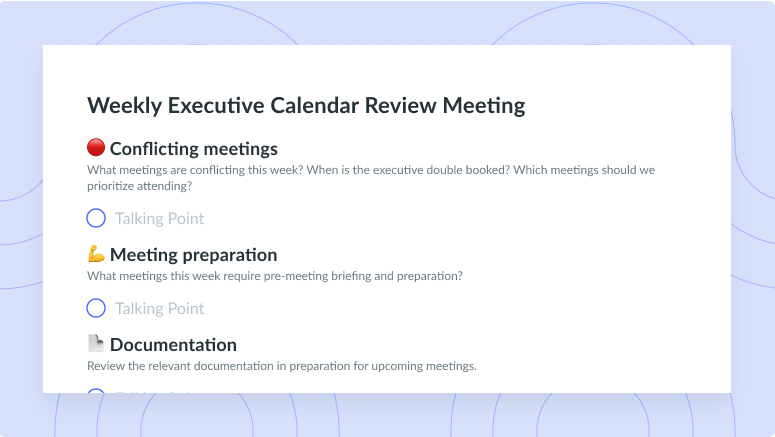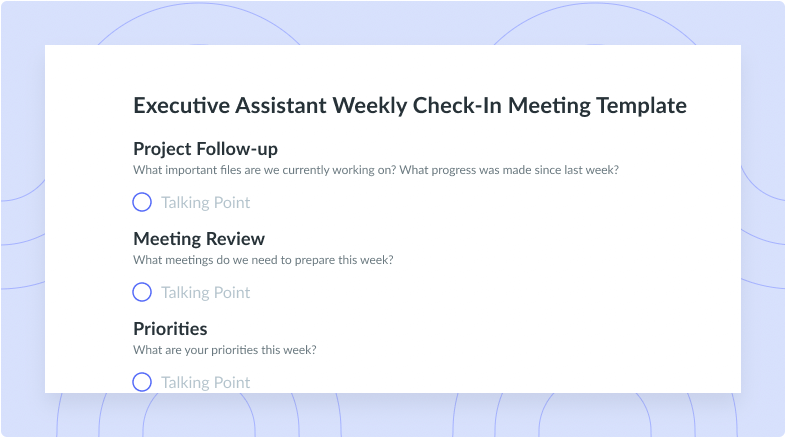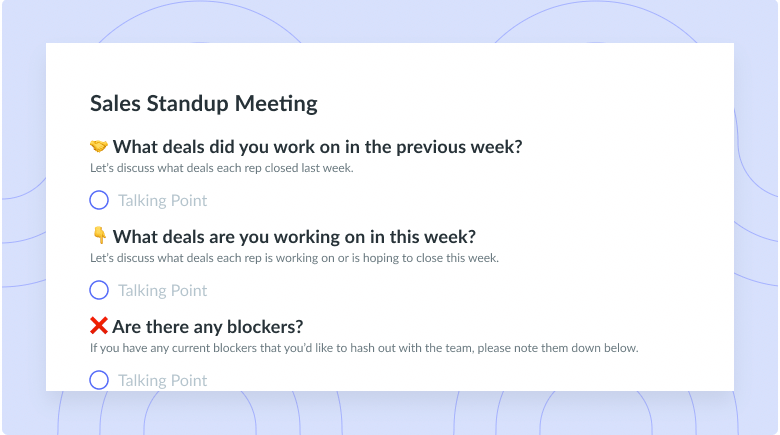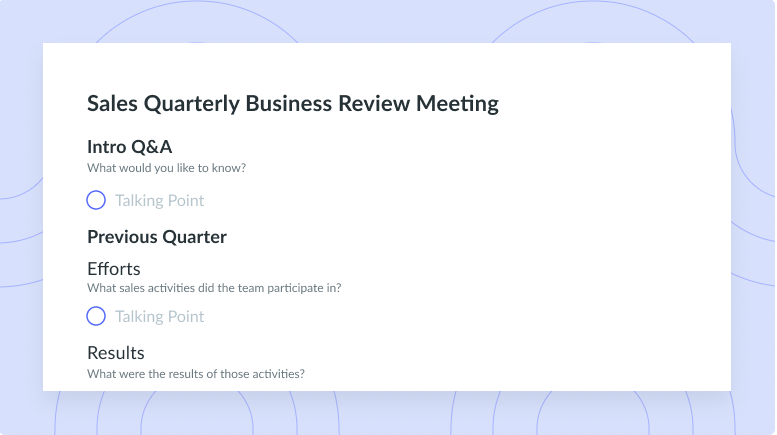How to Organize a Busy Schedule: Tips, Tools, & Techniques
An organized schedule can help you stay on track. Learn tips and techniques on how to organize a busy schedule!
Between meetings, projects, daily work, and emails – not to mention “you” time and your social life – your schedule can quickly become overwhelming. Maybe that means you struggle to keep your calendar organized, but there are plenty of ways to manage a busy schedule. Read on to learn how to organize a busy schedule and find some tools that can help.
Tips and techniques on how to organize a busy schedule
How you organize your schedule can shape how much you accomplish during your workday. For example, a bunch of sticky notes plastered around your computer can work as reminders, but they might not keep you organized long-term. Here are some tips on how to organize a busy schedule the right way.
- Create a daily schedule
- Create a weekly schedule
- Keep your to-do’s in sight
- Divide your time and conquer your tasks
- Set business hours and stick to them
- Color-code your calendar from hot to cold
- Give yourself incentives
- Set aside certain days every week for certain tasks
1Create a daily schedule
Writing out a daily schedule can help you stay focused, lower your stress, and make you more productive. This starts with taking some time to write out everything you need to do on a day-to-day basis. Then, you can create time blocks so you can visualize your schedule and set aside time for work, your social life, and yourself.

Stay on top of your busy schedule
Organize your meeting agendas, talking points, action items, and feedback requests all in one place with Fellow!

2Create a weekly schedule
For tasks that are important but not everyday, you can create a weekly schedule to prioritize tasks and get everything in order. For example, you likely don’t need to grocery shop or check your team’s timesheets every day, but maybe you need to do it weekly. A weekly calendar can help you find open time in your week for these one-offs until they become routine.
3Keep your to-do’s in sight
To stay on top of your busy schedule, try keeping your to-do list somewhere you can easily see it. This could be tacked onto the wall in front of your desk or near your general work area. Having your list in sight can help you refocus when your mind begins to wander. Then, after you finish each task, you can cross it off your to-do list and breathe easy.
4Divide your time and conquer your tasks
Once you have your to-do list written down, you can get as specific as you want with your tasks. For example, you may want to write out your daily routine to look something like this:
- 8:00 a.m. Head to the office
- 8:30 – 8:55 a.m. Get organized and go over emails
- 9:00 – 9:30 a.m. Weekly team meeting
- 10 – 11:30 a.m. Work on client project
This type of schedule is highly structured and can keep you on track throughout the day, especially if you often get distracted. Whether you choose to set time blocks for each activity or write a to-do list, don’t forget to take breaks and give yourself free time.
5Set business hours and stick to them
Before you create your schedule, think about what time of day you work best. Are you an early bird, or do you work best in the afternoon or evening? Then, set your work hours within the times of day that work best for you. This can take a little trial and error, but once you find your ideal schedule, stick to it, and you’ll likely be more organized.
6Color-code your calendar from hot to cold
Picture it: You just got into the office, and you’re viewing your schedule for the day. At first glance, you may feel overwhelmed looking at a screen filled with gray time blocks. To better organize your day and stay on track, you may want to color-code your schedule. Color-coding your schedule can help you visualize your blocks as meetings, work periods, breaks, or free time.
One way you can color-code your calendar is through color psychology. For example, red is a bold color, usually associated with power or urgency. You can use this color to highlight your most important tasks, whether that’s an upcoming deadline or a meeting. Blue, on the other hand, is a calming color. You could highlight your breaks or your favorite tasks in this color.
7Give yourself incentives
When you’re dealing with a busy schedule week after week, you might feel burnt out or have the urge to skip a few tasks. Instead of opting out, you can power through a busy day with incentives or small rewards for doing your work. These incentives can occur as often as you want – it’s entirely up to you. They can also be as large or small as you’d like. For example, you could treat yourself to a latte or a few chapters from your favorite book after work.
8Set aside certain days every week for certain tasks
Between errands, your social life, and work, your schedule might be packed. To ease your stress and make your schedule more consistent, set aside certain days for certain tasks. For example, maybe Sunday is your day to buy groceries and meal prep for the week. Then Friday evenings, you can meet up with friends for a casual dinner or happy hour. This set schedule can help you organize your life and get into a regular routine.
What are some good time management practices?
To help you manage your time better and end your day feeling like you’ve checked off all your boxes, take the below steps.
- Set alerts for yourself
- Store finished work in a “completed” folder
- Invest in better time management
- Keep your work area clean
1Set alerts for yourself
Setting alerts or alarms on your phone is a great time management tool you can use throughout your workweek. These alerts can be general reminders every hour or so to take a 10-minute break. Or they can align with your daily calendar and send you a notification when it’s time to move on to the next task.
2Store finished work in a “completed” folder
It can be overwhelming to come to work and look at a screen filled with documents. Instead of letting documents from last year pile up and take up space, you should separate your ongoing tasks from your completed tasks. For starters, it can be satisfying to transfer ongoing projects into a completed folder. On top of that, you’ll also organize your space so you can work more efficiently.
3Invest in better time management
Everyone has days when they don’t feel like doing work right away, so they spend a few minutes scrolling through social media. Those minutes can turn into a few hours before you know it, and suddenly, it’s three hours later and your morning is shot. Instead of letting your day slip away, choose one big or highly important task to dedicate your time and energy into finishing right away in the morning. Then, once you finish that, give yourself a break or focus on a smaller task.
4Keep your work area clean
With an organized desk, you can more easily get through your day without moving things around and losing valuable time. You can also gain back all the time you’d lose to searching for what you need.
For example, say you’re looking for extra staples in your desk but you can’t seem to find them in your overflowing junk drawer. This can take precious time out of your day, stress you out, and cause you to lose your train of thought. Instead, start each day the right way with a tidy desk that can help you focus and run your day smoothly.
Tools to organize a busy schedule
Organizing your daily schedule can be the key to a productive, successful day. The tools below can help you stay on top of your hectic schedule each and every day.
1Fellow
Fellow is a meeting management software you can use to make the most of the meetings in your busy schedule. Fellow includes calendar integrations so you can sync your schedule with the app to get all your ducks in a row. There’s also a meeting action items tool you can use to get all your tasks into your schedule. It’s a seamless way to tie up all your day-to-day loose ends.
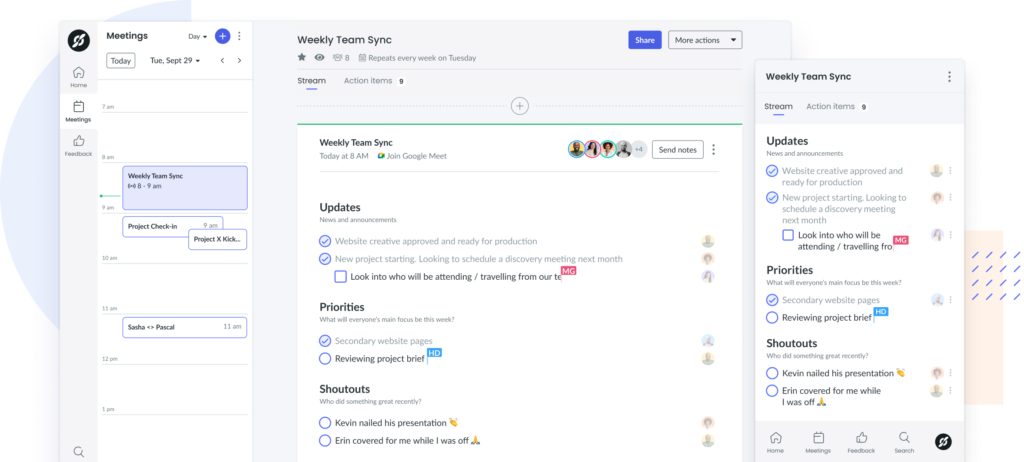
“Fellow helps us stay organized and follow up on the action items that inevitably come out of every meeting. It’s been a game-changer for our team.”
John Gleeson, VP of Customer Success
2A notebook
A notebook is a great option for writing out daily to-do lists and dividing your large and small tasks. You can draft a basic to-do list or set up an entire schedule complete with start and end times. You can also use colorful highlighters to color-code your weekly schedule – meetings highlighted in yellow will probably feel more urgent.
3Calendar apps
Calendar apps can help you plan out and visualize your schedule days, weeks, and months in advance. With a calendar app, you can add events, set reminders, and link with team members or friends. Many calendar apps connect to both your computer and smartphone so that you see the same schedule everywhere. No more accidentally missing important meetings or events.
4Digital to-do lists
If old-fashioned paper and pen aren’t your thing, you can create and sort out your day with a digital to-do list. This is a good option for organizing your day because you can sort through your tasks without writing them in a specific order. You can order them later if you want – it won’t take a bunch of erasing things or scratching them out like with a notebook. You can also set reminders, sync with other devices, and personalize your to-do lists with different colors for each task.
Organize your busy schedule with Fellow
An organized calendar can lead to more productive, less stressful work days. To better arrange your busy schedule, you’ll need a digital platform where you can sort all your meetings and jot down all your tasks. With Fellow, you can do all and organize your ideas, record notes, and get peer feedback, all in one streamlined platform. Now, you’ll have a clear calendar and a tidy space for your meetings – it’s a hassle-free way to organize your busy schedule.










